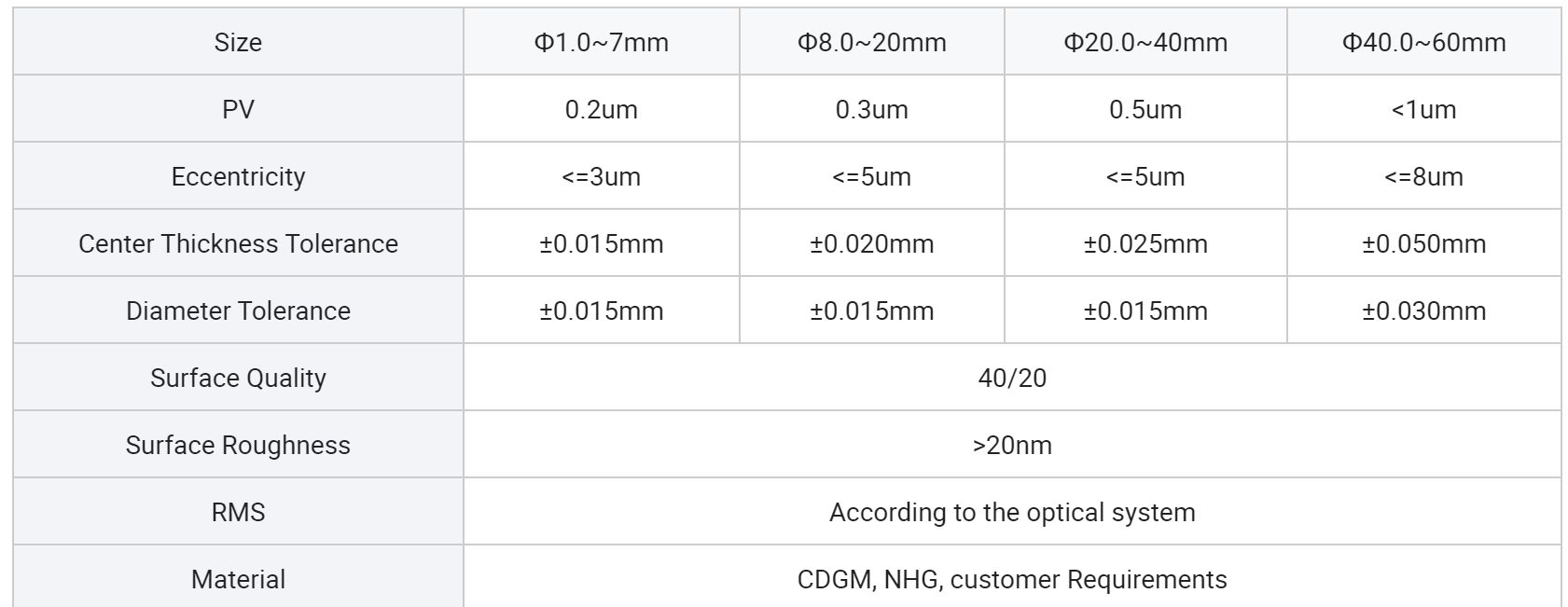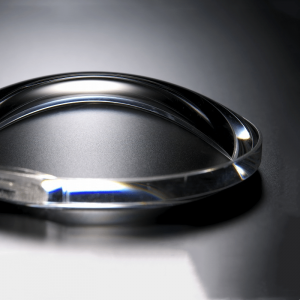Customized Sapphire/Fused Silica/Bk7 Optical Aspherical Lens
Optical Windows
An aspheric lens or asphere (often labeled ASPH on eye pieces) is a lens whose surface profiles are not portions of a sphere or cylinder. The asphere’s more complex surface profile can reduce or eliminate spherical aberration and also reduce other optical aberrations such as astigmatism, compared to a simple lens. A single aspheric lens can often replace a much more complex multi-lens system. The resulting device is smaller and lighter, and sometimes cheaper than the multi-lens design. Aspheric elements are used in the design of multi-element wide-angle and fast normal lenses to reduce aberrations. They are also used in combination with reflective elements (catadioptric systems) such as the aspherical Schmidt corrector plate used in the Schmidt cameras and the Schmidt–Cassegrain telescopes. Small molded aspheres are often used for collimating diode lasers. Aspheric lenses are also sometimes used for eyeglasses. Aspheric eyeglass lenses allow for crisper vision than standard "best form" lenses, mostly when looking in other directions than the lens optical center. Moreover, the reduction of the magnification effect of a lens may help with prescriptions that have different powers in the 2 eyes (anisometropia). Not related to the optical quality, they may give a thinner lens, and also distort the viewer's eyes less as seen by other people, producing better aesthetic appearance.
2.Spherical vs aspherical lenses
Aspherical spectacle lenses use varying curves across their surface to reduce bulk and make them flatter in their profile. Spherical lenses use a singular curve in their profile, making them simpler but bulkier, especially in the center of the lens.
3.Aspheric Advantage
Perhaps the most powerful truism about asphericity is that vision through aspheric lenses is closer to natural vision. Aspheric design allows flatter base curves to be used without compromising optical performance. The basic difference between a spherical and an aspheric lens is that a spherical lens has one curvature and is shaped like a basketball. An aspheric lens curves gradually, like the football below. The aspheric lens reduces magnification to make the appearance more natural and the decreased center thickness uses less material, resulting in less weight.
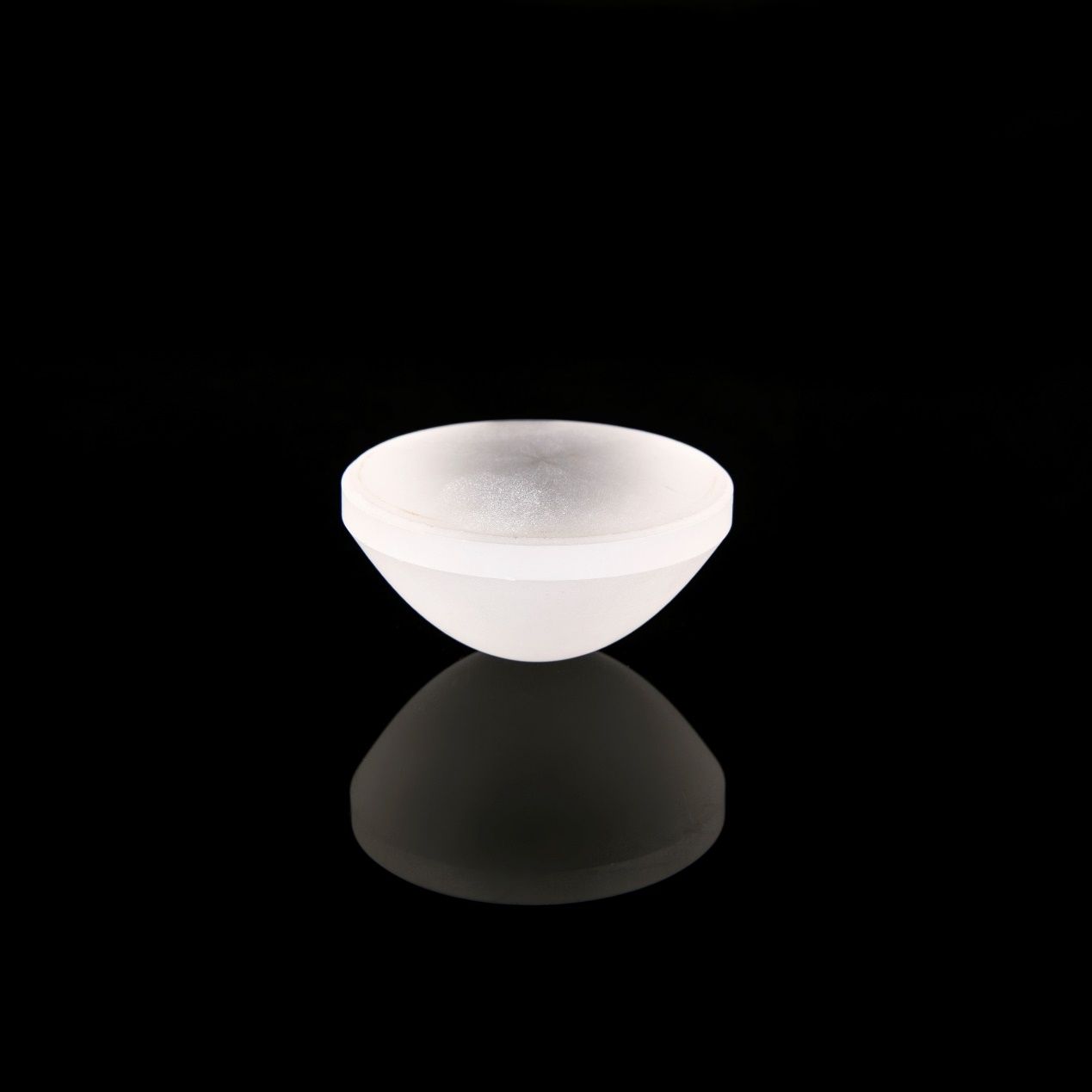
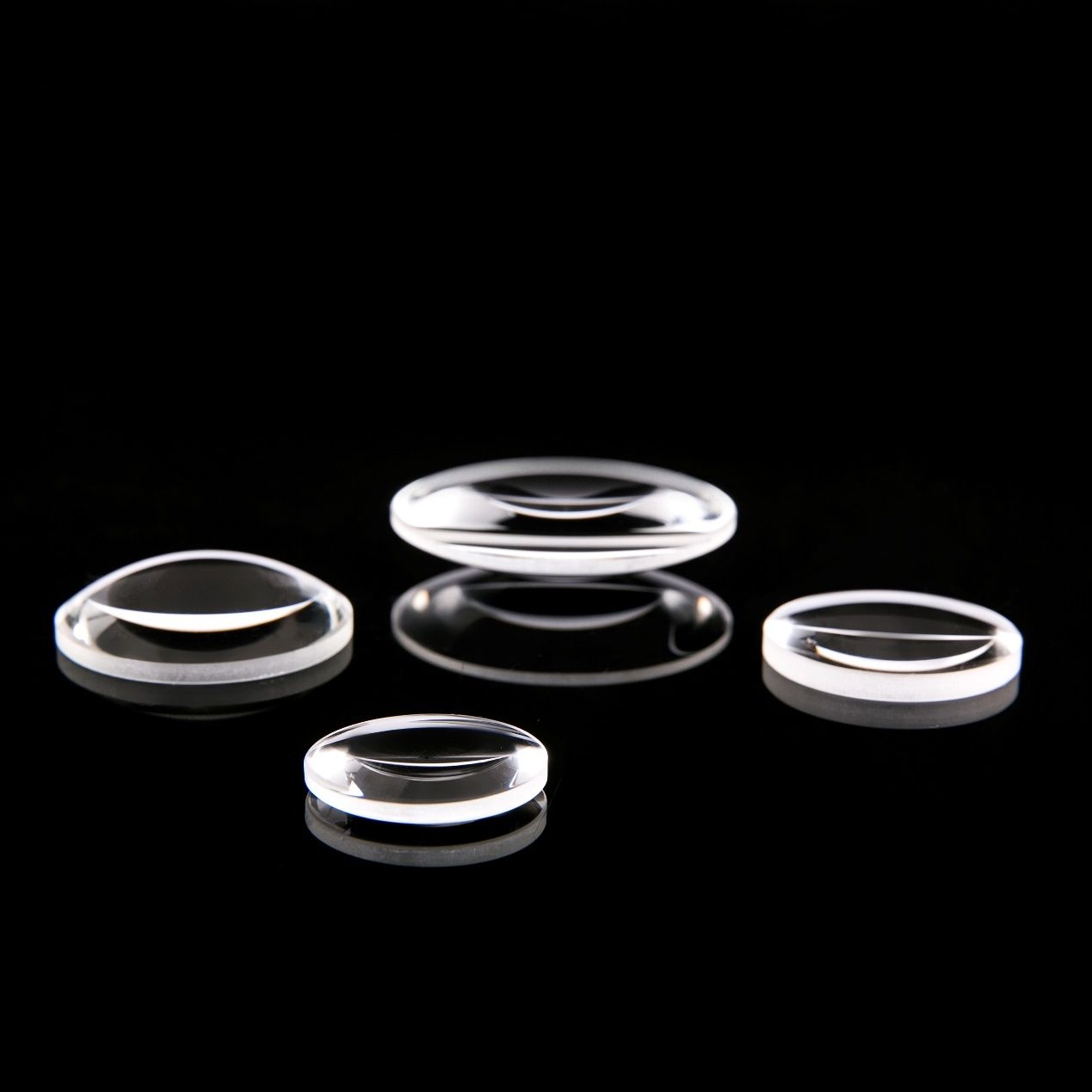
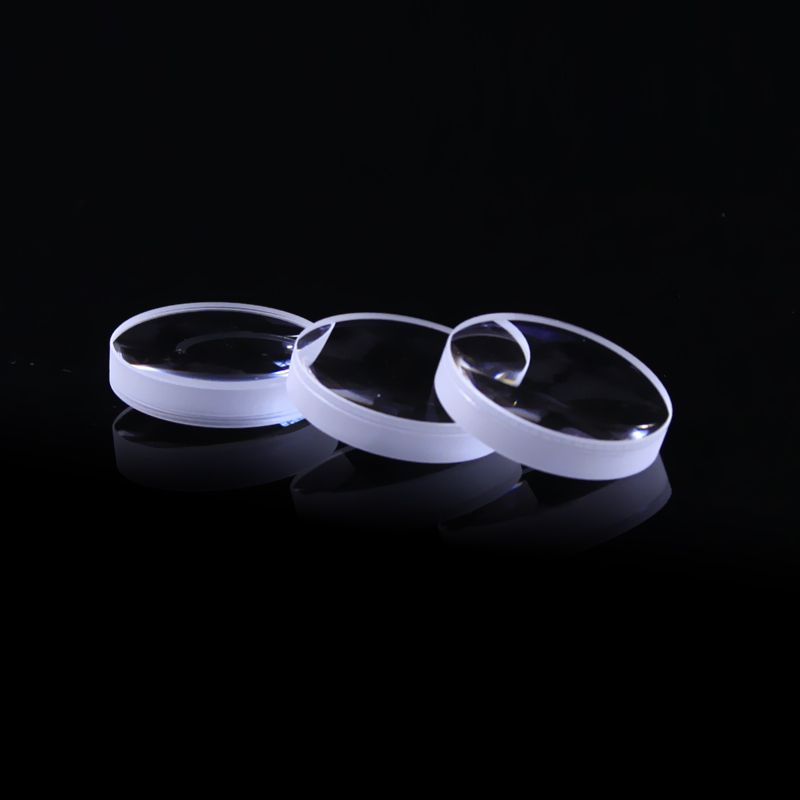
Specifications
Standard Fused Silica:
Material: UV grade Fused Silica(JGS1)
Dimension Tolerance: +0.0/-0.2mm
Surface figure: λ/4@632.8nm
Surface Quality: 60-40
Angle tolerance: ±3'
Pyramid: < 10'
Bevel : 0.2~0.5mmX45°
Coating : as required
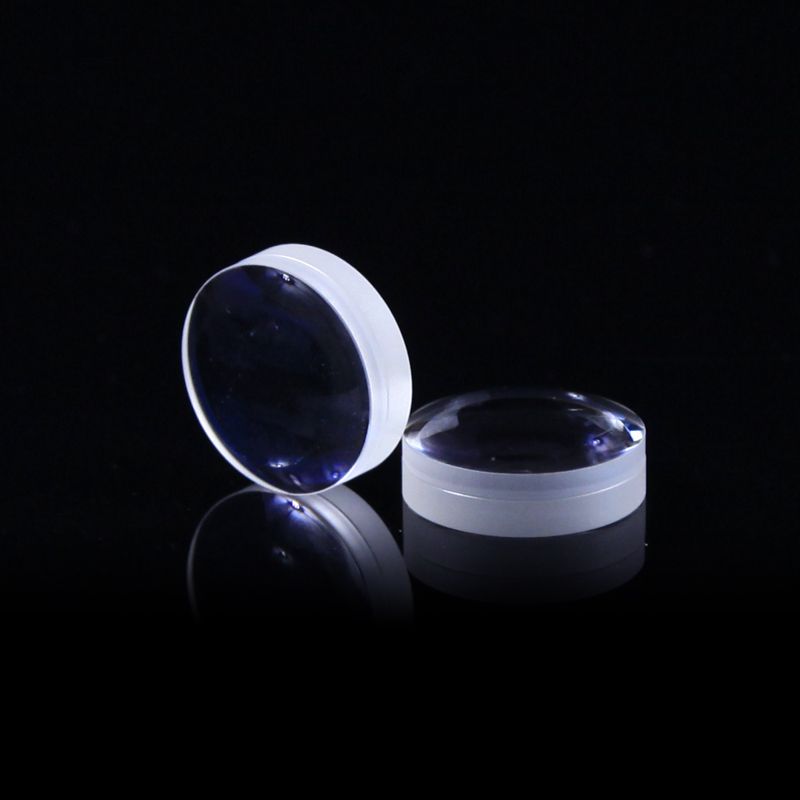
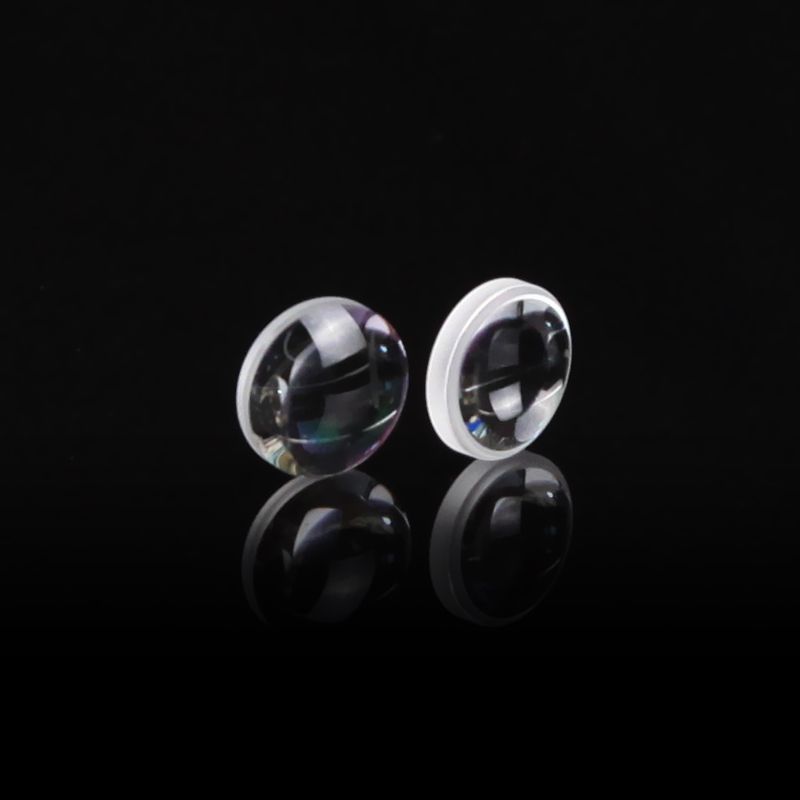
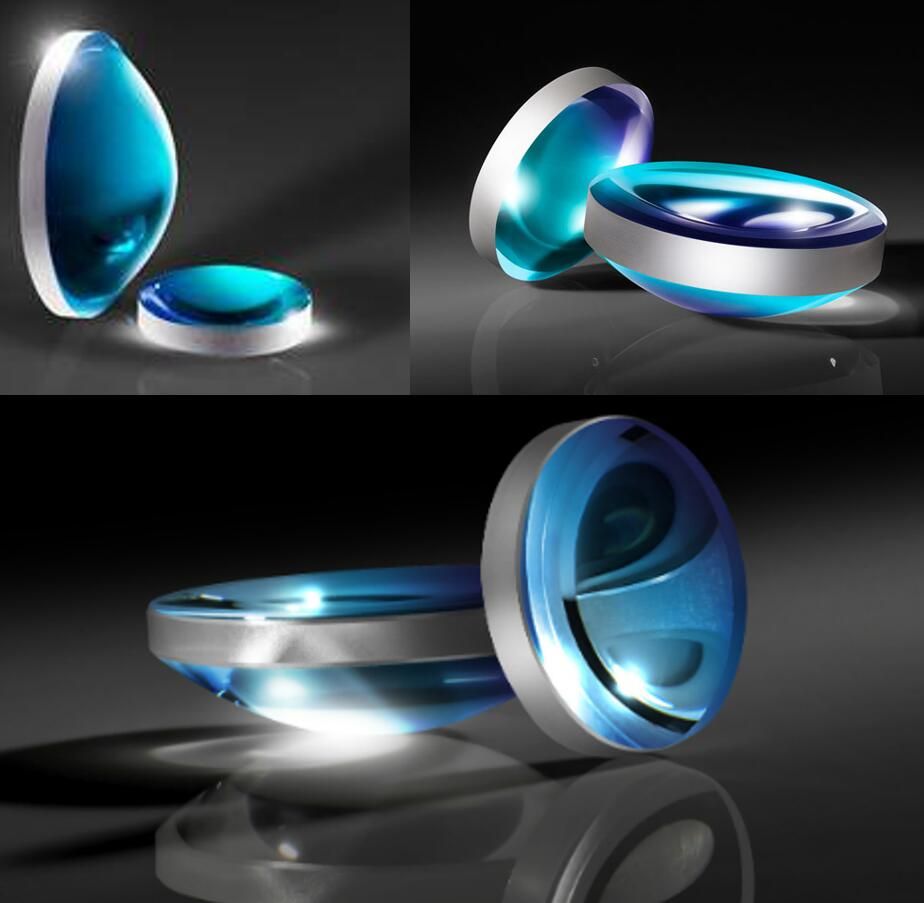
Production Show
